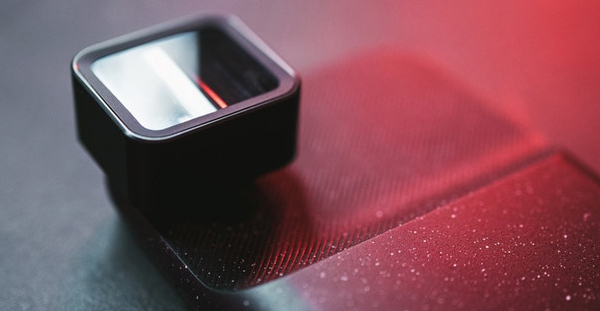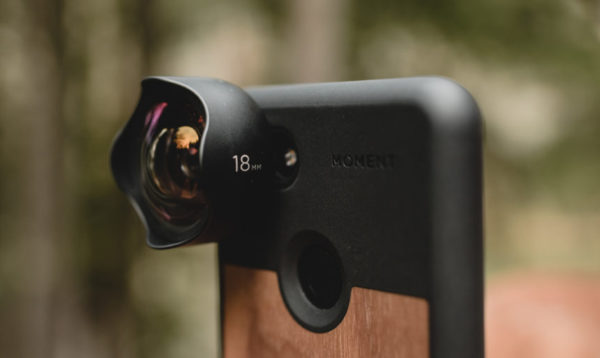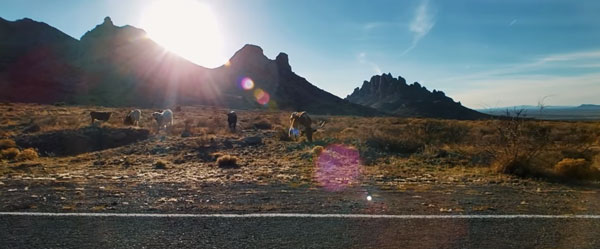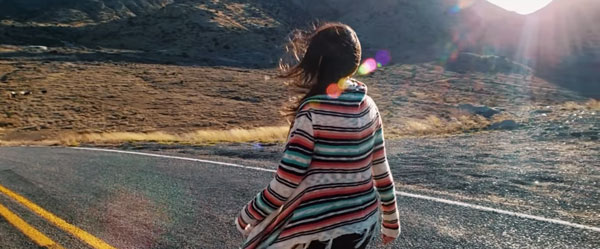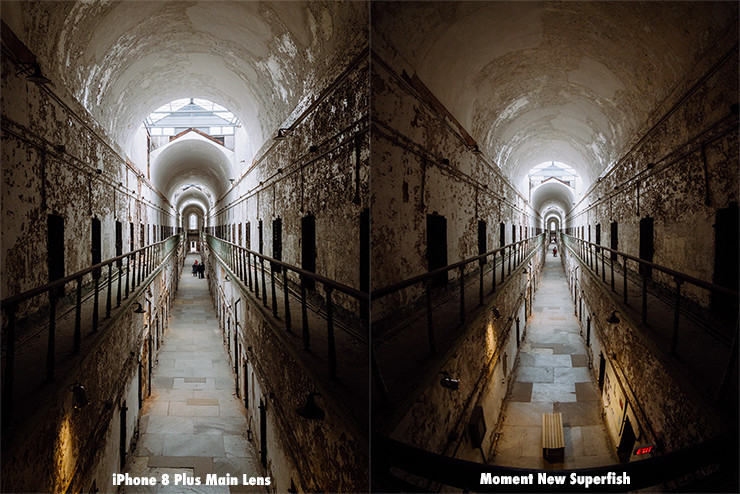Moment Lenses For Smartphone Filmmaking
One of the most popular accessories for iPhones and other smartphones is the Moment Lens range. Here we are going to go through them, one by one, to have a look at what they promise and the results achieved.
Note: Moment lenses need their purpose built case to attach to your smartphone. These cases do not come with the lens, so they are an extra cost (they start at around $40). Once you have a case, of course you can use it for all their lenses.
Who are Moment?
Moment are one of the leading makers of lens attachments for smartphones. They kicked off with a kickstarter in 2014. The campaign was a huge success, raising almost $0.5m from over 4000 backers.
Obviously, they were onto something. But did they just start manufacturing high grade lenses? Nope.
On their first Kickstarter campaign they tell us, “Taking the same proprietary process we have used the past 25 years in designing and manufacturing cinematic lenses, we created two prototype lenses that achieve previously unattainable image quality for mobile lenses.”
Then later they reveal:
“Our previous work includes the founding of Contour Cameras, the founding of Cranium, and the engineering of some of the world’s best cinematic lenses.”
Although we are used to seeing certain young faces on their popular YouTube videos, their team consists (or did back in 2014) of 9 people. OK, so they arrived with plenty of camera and lens making experience.
Then last year (2018), their most recent campaign raised over $1.5m for their anamorphic lens, a phone case/battery and a gimbal counterweight.
So that’s the history. Let’s look at the lenses.
58mm Telephoto
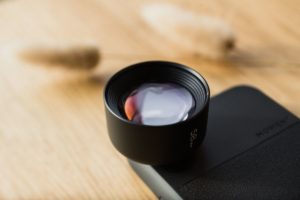
Back in 2014, Moment released its first 60mm telephoto lens for the iPhone 5 and 5S. So this 58mm telephoto was an upgrade on that old lens, with some improvements to quality.
The Moment 58mm telephoto adds 2x optical zoom to iPhone, Pixel, Galaxy and other smartphones. You also get approximately 4x optical zoom when mounted over the iPhone’s telephoto lens.
Essentially, what this lens does is narrow the view and make the depth of field shallower. But not too much.
Note: the official telephoto range actually begins at 60mm, so the Moment “tele” doesn’t actually doesn’t qualify as one.
To Bokeh or Not To Bokeh?
Some reviews talk about adding bokeh, but that is really stretching the meaning of the word bokeh. The bokeh effect was initially invented to describe how distant lights turn from pins points to big fuzzy circles. But I’m afraid the Moment 58mm will not create that effect for you.
However, if you can combine Moment’s telephoto lens with your phone’s software portrait mode, you can add some extra background blur and get closer to the Holy Bokeh. Word says this combo with the Google Pixel 3 works out really well.
On the down side, as with most lenses for attaching to smartphones, there is some distortion at the edges of the lens. But with the 58mm there is improvement over the old 60mm.
Having said that, you might see this as a pleasing look. Remember, many things we see now as stylish were often seen as ugly in the past. Polaroids were used by photographers as rough tests before they used a proper camera. Then eventually became a look in itself to the point where Instagram copied the look and gave them to us as filters.
Do I think this lens is worth it for smartphone filmmaking? Actually, yes I do. Shooting close ups with a wide lens is not the most flattering look. Nor the most intimate. And smartphones usually come with wide lenses as standard.
So although the lens has its limits, this is as good as it gets without making the step to DoF adapter.
This is a simple honest focus-pull test which gives you some idea of the use of this lens for filmmaking.
Comparable lens: the SIRUI Black 60mm. Note, the SIRUI fits the Moment phone case.
Read more: Telephoto Lens – Why Do You Need One?
Anamorphic
If you want to give your smartphone videos some epic, widescreen cinematic style, then adding an anamorphic adapter is probably the quickest way to it.
When American film director Sean Baker chose to shoot Tangerine on a iPhone, it was the Moondog Labs anamorphic lens which helped him decide.
But anamorphic lenses became a thing used by Hollywood directors back in the 1950s. Partly to compete with the new “television” screens appearing in people’s houses, the decided they need to up their game. One way to keep cinema a special experience was to stretch the image wider (and in some cases bend the screen around the around to me the experience more immersive).
But how do you get a wide image using the same 35mm film? The solution was an anamorphic lens which would squeeze the wider image onto the traditional 35mm frame ratio. The projector then had to be adapted to “desqueeze” the image.
As Moment lenses were taking off, of course they wanted to cash in on the popularity of Moondog Labs’ lens.
“This is the holy grail of filmmaking.” Moment
Anamorphic lenses give you a wider field of view without adding barrel distortion. Normal wide-angle lenses compress the image from all sides, whereas anamorphic lenses compress only the sides of the image. An anamorphic lens also gives you a unique style of “sci-fi” lens flare.
Should you think about having a Moment anamorphic lense? If you are a smartphone filmmaker, then yes. Less so if you are using your smartphone primarily for still photography. Moment generally make great quality lenses and the anamorphic is not exception.
Unlike other lenses, the anamorphic must be oriented horizontally. So this Moment lens comes with a tiny Allen key to loosen and rotate the mount depending on the smartphone.
If you are already committed to the Moment lens range, then it makes sense to stick to the Moment anamorphic. Then you’ll have no compatibility issues. Moment’s Pro Camera app will “de-squeeze” the image for you (and FiLMiC Pro will do that job too, if you have it).
Comparable lens: Moondog Labs anamorphic.
Wide 18mm
The lens is an 18mm equivalent, so it aims to produce something similar to a 18mm lens on a regular camera. With this wide angle conversion lens, you can capture about double the image size compared your phone’s inbuilt lens alone. Moment says this is the “most advanced lens we’ve ever made” and that pictures capture with the lens contain no “no fisheye distortion”.
This is a great attachment for your smartphone for travel photos, especially when you want to grab a one-shot take of stunning landscape. It’s also a good allrounder lens which will add options to your smartphone photography.
For filmmaking, this is less of an exciting addition than the previous 2 lenses. But you could perhaps use the wide angle and crop the top and bottom to create something that mimics the anamorphic. You won’t get the same result, but an approximation.
You’re going to get some nice lens flares with the Moment 18mm, too. Here’s some still frame grabs from a video test posted to YouTube (taken with Moment ND filters added, I believe).
I don’t know about you, but I think I prefer these lens flares to the ones you get from the Moment Anamorphic. They’re a bit more natural. For some reason the Moment anamorphic produces very straight, thick-lined flares. But maybe it’s just me.
Watch Brent Hall’s full test here.
Comparable lens: SIRUI 18mm
Superfish Lens
Moment say their award winning fisheye lens “is the widest lens we make”. A fisheye lens will give you an even wider view than the 18mm.
“With a 170 degree field of view, you’ll instantly notice the dramatic difference when mounting it to your phone.” Moment
There are a number of more affordable fisheye lenses for smartphones on the market. But what you are paying for here is the quality of the lens, which adds minimal distortion to the image (apart from giving everything that fisheye look, of course).
What’s the fisheye look? Well, what were straight lines come out curved. Tall buildings look like something out of the film Inception. But all done with corner-to-corner sharpness.
Why would you use one? Simply to get extreme wideness. Are you visiting a spectactual building but can’t get the whole thing into frame? How about a stunning landscape or giant feature? Using a fisheye will bring more of it into frame.
These lenses can also be useful for those who need photos of interior rooms and want to be able to show more of the room in one picture.
I would say this lens is mostly for stills photographers. However, it can be a useful tool for filmmakers too. Maybe you want to tap into your inner Terry Gilliam – a director known for having a liking for the surreal qualities created by the very wide lens. You can also give your phone that GoPro look.
If you want the extra wide but without the curves, with stills you can always fix that in software such as Adobe Photoshop or an app such as SKRWT.
Comparable lense: Sandmarc Fisheye lens
Macro Lens
Moving to the other end of the scale, the Moment Macro lens allows you to get right up close to small objects. Seeing every detail of a flower petal is enough to raise the hairs on the back of a bee’s neck. And with a macro lens you’ll be able to film them rising.
Moment say that as opposed to traditional macro photography “this lens works less than an inch away from the subject to capture rich textures, materials, and living things that our phones were never before capable of seeing”.
There’s probably very little use for a macro lense when filmmaking. I guess there are occasions when you might need an extreme close up of something. A shot of an iris can be very dramatic, for example.
However, this lens is mostly for extreme close up stills photography. Moment have done another fine job creating a high quality conversion lens, which adds minimal extra distortion. This lens also comes with a removable diffuser hood, to help get more control over the image.
The lens gives you a X10 magnification. Personally, I think the macro is the least valuable of the Moment range. There are a number of good quality macro lenses on the market for a good deal less cost. But if you are sold on the Moment range and just want to complete the set, then it makes sense to keep things simple.
Comparable lens: AUKEY X15 Macro
That’s the full range of Moment lenses. You can see they have created a whole system, rather than simply a few clip on lenses. This system includes cases, battery cases and their own dedicated camera app. The app even includes a store so you can go directly to buying more Moment stuff in a tap of your smartphone screen.
The lenses are not the cheapest on the market, but you are guaranteed the highest quality. Pretty much as good as it currently gets for smartphone conversion lenses. On the downside, some folks have reported their cases breaking after some use. Considering there’s no other obvious way to mount Moment lenses to your phone…
Rea next: the Official MoMo Kit List
Eager to learn more?
Join our weekly newsletter featuring inspiring stories, no-budget filmmaking tips and comprehensive equipment reviews to help you turn your film projects into reality!
As an Amazon Associate I earn from qualifying purchases.
Simon Horrocks
Simon Horrocks is a screenwriter & filmmaker. His debut feature THIRD CONTACT was shot on a consumer camcorder and premiered at the BFI IMAX in 2013. His shot-on-smartphones sci-fi series SILENT EYE featured on Amazon Prime. He now runs a popular Patreon page which offers online courses for beginners, customised tips and more: www.patreon.com/SilentEye


